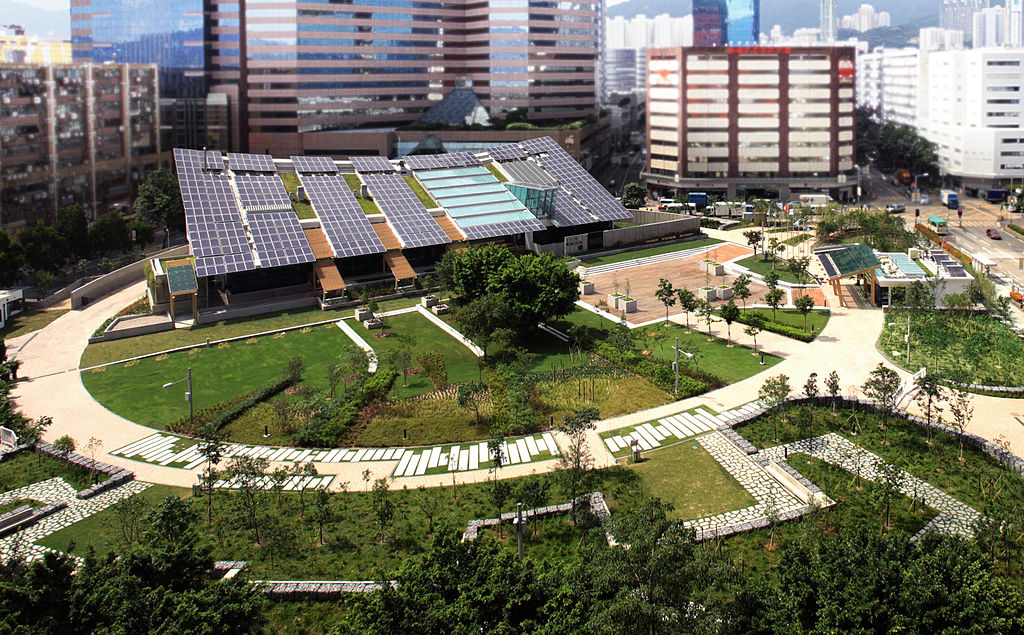
If global warming is to be capped at +2°C by 2100, 4,600 billion dollars will have to be invested in building and construction energy efficiency before 2030. According the International Energy Agency, that is approximately 15% of the total budget required to reach the “2°C Objective”. This number is so high because of the large space that the construction industry occupies in relationship to the total sum of carbon emissions linked to all human activity.
‘Carbon-free’ buildings: a non-negotiable ecological imperative
In France, 44% of all energy consumed annually goes to buildings. In terms of carbon dioxide emissions, the building industry and its 120 million tons per-year of exhaust make up a quarter of France’s carbon dioxide emissions, more than transportation or manufacturing. This data has made the building industry a pillar in French and European clean energy policies, as first seen in 2010, with the first European policy on energy performance in the building industry.
In the residential sector, heating is the biggest culprit in carbon gas emissions (85% of all CO2 emissions) – ahead of hot water heating, with 2/3 coming from the use of natural gas and fuel combustion.
What ‘carbon-free’ really means
To be sure, the full carbon emissions cycle does not stop at with a building’s operational consumption (meaning consumption and transportation related to the building’s users), where emissions tend to diminish dramatically in new buildings. ‘Grey energy’, which factors in all phases (from conception and construction to demolition, renovation, upkeep and daily use), is a major determining factor.
To give an example, in a building that has been categorized as BBC 2005 (a low energy consumption building), the energy consumed during construction represents 30 to 50 years’ worth of energy consumed during its exploited lifecycle. The period of construction is therefore the key moment to control, when carbon emissions are at their highest – even for the most environmentally friendly buildings (still 60% according to the BBCA scale).
Rationalize during construction, control during use
From Paris to New York, Tokyo and Johannesburg, 19 ‘Net-Zero Carbon’ from the C40 Cities network are committed to reaching a very ambitious objective by summer 2018: all new buildings must meet a ‘zero carbon footprint’ exploitation standard by 2030. The ‘net-zero carbon’ replaces the ‘lower consumption’ objective that was frequently included in previous commitments. Nevertheless, mayors will still have to act in cooperation with the private sector, or the actual owners of the buildings in question. Overall, these efforts are most often the fruit of measures taken to optimize energy use and using renewable energy sources, and aim to minimize consumption during the exploitation phase.
As the ‘Zero-Carbon’ School in Nanterre has demonstrated, efforts to control consumption during the exploitation period and rationalize energy use during construction are not unrelated. Using renewable materials (wood and derived products) allows for a substantial reduction in ‘grey energy’ – producer of more than half of the CO2 generated by materials production. However, using ‘bio-sourced’ materials allows buildings to actually stock carbon: this sequestration of carbon materials during a building’s lifecycle compensates in part the carbon emissions produced during a building’s construction. Finally, a ‘zero-carbon’ objective naturally implies using methods drawn from the circular economy, such as recycling materials during construction and designing buildings that, over time, can either be used for new purposes or expanded.
Renovation : zero-carbon’s biggest project
In 2015, the Working Group on Responsible Buildings (RBR) 2020 – 2050 warned ‘On the whole, in examining energy use, emissions from building exploitation are the most prevalent’. Reversing that trend in a way that would reduce such emissions by half implies a considerable amount of building renovations. Concentrating solely on heating systems would allow for an overall reduction of 20%.
Political priorities and regulations oblige, renovation efforts are currently well behind schedule in relationship to declared objectives, and should lead to renovations on no less than 500,000 residential buildings a year, beginning this year, to finally reach a rate of 700,000 in 2020.
Even still, unless large constructions are taken into account, an older building ‘however well renovated, often consumes more energy than a new building’, the RBR working group points out. Whether it is for a renovation or a new construction, each approach will have to be determined on a case by case basis.


